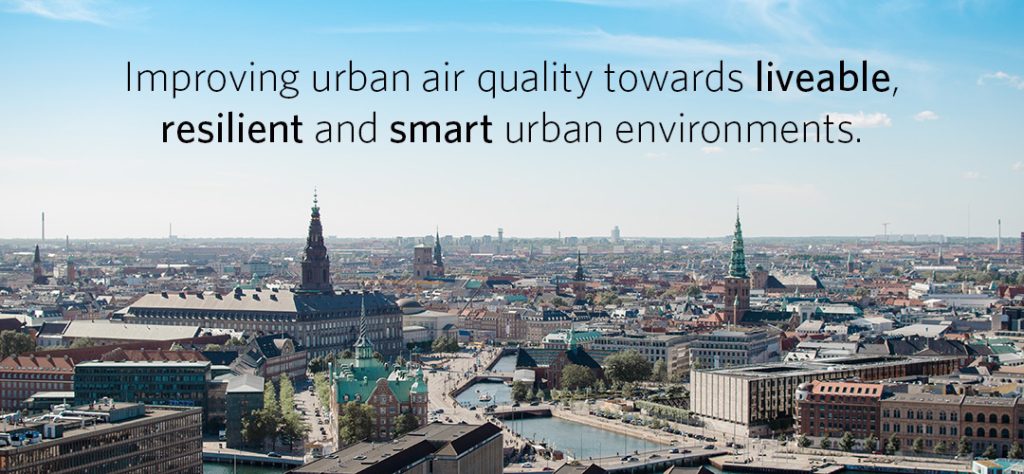First NameLARROQUE
Last NameAnne
Emailalarroque@sprb.brussels
What is the name of your organization?Bruxelles Mobilité
Website/URLwww.mobilite.brussels
What best describes the type of organisation that you are representing?Other Government Administration
Where are you based?Pl. Saint-Lazare, Saint-Josse-ten-Noode, 1210, BE
| Name of the equipment |
|
aethalometers AE51 |
| Brand |
|
AethLabs |
| The number of these devices used in your initiative (estimation): |
|
8 |
| Origin |
|
|
| Measured parameter (you can select several) |
|
- Temperature
- Humidity
- Black Carbon
|
| Temperature |
| Temperature – Unit |
|
degree Celsius |
| Black carbon |
| Black carbon – Unit |
|
nanogram per cubic meter (ng/m³) |
| Black carbon – Technology |
|
infrared wave (wavelength=880 nm) absorption |
| Black carbon – Range of measurement |
|
can reach 1.000.000 ng/m³ |
| Black carbon – Service life |
|
filter life time : average of 5.000ng/m³ for 24hours at 100ml/min ; average of 100.000ng/m³ for 3 h at 50ml/min ; average of 1.000.000ng/m³ for 15min at 50ml/min |
| Black carbon – Detection limit |
|
5ng/m³ at 200ml/min and 300-second timebase ; 50ng/m³ at 50ml/min and 300-second timebase |
|
| Are there any other technical details you would like to share? |
|
** The following text consists of precisions about the short answers that appear above. **
These aethalometers measure black carbon (particulate matter that are part of p.m. 2.5) concentrations.
The measurement unit that appears in the data files released by the device is the nanogram per cubic meter (ng/m³). The principle of the measurement is based on light absorption by black carbon particles. In particular, the only wavelength that is used is 880 nanometers (nm), which corresponds to the closed infrared wavelengths region (nearly the approximative boundary between visible light and infrared). The change in absorption of transmitted light due to the continuous collection of particles on a filter allows the device to provide a concentration value.
In terms of measurement range and service life of the filter, the aethalometer is usually used to measure concentrations of approximately 1.000.000 ng/m³. The aethalometers AE51 and MA200 are also able to measure higher concentrations if they are processed by the company that developed them but this application is not useful in the framework of exposition to black carbon during road trips. Depending on the flow rate setting, the filter life time possibilities are the following :
– an average of 5.000 ng/m³ for 24 hours at 100 ml/min
– an average of 100.000 ng/m³ for 3 h at 50 ml/min
– an average of 1.000.000 ng/m³ for 15 minutes at 50 ml/min.
As the detection limit depends on the flow rate and the measurement timebase, any accurate value of detection limit can’t be provided. The engineers of the AethLabs company, which designs and solves technical problems of sold devices mention the value of 5 ng/m³ when the highest performance settings of 200ml/min flow rate and a 300-second timebase are taken into account. If the selected flow rate is 50 ml/min, i.e. the lowest value for this parameter, the detection limit reach the value of 50 ng/m³ for the same timebase. In the framework of the project, the selected timebase and flow rate were 60 s and 100 ml/min. We can only conclude the detection limit is higher that 5 ng/m³ and maybe higher than 50 ng/m³.
The two aethalometers also measure the intern temperature of the device but this parameter is only used to try to figure out why some concentrations seem to be abnormal.
As for the communication type, we had to use small dataloggers that were not supplied with the aethalometers. These aethalometers data are note geolocalized. |
|
| Communication type |
|
|
| Energy type |
|
|
| Temporal resolution |
|
• 1 second • 10 seconds • 30 seconds • 1 minute • 5 minutes |
| Where are you measuring air quality? |
|
Both |
| Device’s location |
|
- Street – public domain
- Street – private domain
- Mobile : Bike mounted
- Mobile : Person mounted
- Mobile : Car mounted
- Home
- Public building
- Other
|
| Devices location – Other |
|
The participants sometimes measure indoor concentrations but the most samples are taken during the trips with so many transport modes as possible. |
| Level of expertise required to operate |
|
Simple if you take the time to read the documentation |
| What is the approximate market price per unit? |
|
6.940,01 E without v.a.t. in 2011 ; 6.557,67 without v.a.t. in 2012 ; 7.582 E without v.a.t. in 2016 |
| Are there any other costs related to this equipment? |
|
N.A. |
| Are there any setup/installation costs? If possible, provide a figure |
|
N.A. |
| Are there any maintenance costs? If possible, provide a figure |
|
The company that represents AethLabs in Belgium, France and the Netherlands proposes two preventive maintenance per year. The company that is active in Belgium and other neighbouring countries proposes a regularly maintenance for 1.200 E without v.a.t. per device and twice a year. |
|
| Name of the equipment |
|
aethalometers MA200 |
| Brand |
|
AethLabs |
| The number of these devices used in your initiative (estimation): |
|
15 |
| Origin |
|
|
| Measured parameter (you can select several) |
|
- Temperature
- Humidity
- Black Carbon
|
| Temperature |
| Temperature – Unit |
|
degree Celsius |
| Temperature – Range of measurement |
|
-40 to 85°C |
| Humidity |
| Humidity – Unit |
|
% relative humidity |
| Black carbon |
| Black carbon – Unit |
|
nanogram per cubic meter (ng/m³) |
| Black carbon – Technology |
|
infrared wave (wavelength=880 nm) absorption |
| Black carbon – Range of measurement |
|
can reach 1.000.000 ng/m³ |
| Black carbon – Service life |
|
There isn’t any filter saturation. |
| Black carbon – Detection limit |
|
30ng/m³ at 150ml/min and 300-second timebase ; 50ng/m³ at 50ml/min and 300-second timebase |
|
| Are there any other technical details you would like to share? |
|
** The following text consists of precisions about the short answers that appear above. **
These aethalometers measure black carbon (particulate matter that are part of p.m. 2.5) concentrations.
The measurement unit that appears in the data files released by the device is the nanogram per cubic meter (ng/m³). The principle of the measurement is based on light absorption by black carbon particles. In particular, the absorption is measured for five different wavelengths : 375 (ultraviolet, nearly the approximate boundary between the ultraviolet and visible domains), 470, 528 and 625 (visible domain) and 880 nm. The change in absorption of transmitted light due to the continuous collection of particles on a filter allows the device to provide a concentration value. The absorption of the light at 880 nm is considered to be the one that is due to the total black carbon particulates. Other wavelengths are supposed to allow the user to isolate the different sources of black carbon pollution.
The main upgrade of these new aethalometers in comparison with the devices AE51 consists of the Dualspot method : due to the filter saturation as black carbon deposits become high, the optical absorption method could underestimate the true concentration value, that is why simultaneous collection occurs on two spots in parallel at different rates of accumulation, which allows a real-time adjustment of the concentration value.
The standard measurement range is the same as the one of the aethalometer AE51 ( 0 – 1.000.000 ng/m³) and can reach higher values as well if the device is processed. Any information about the service life is given in the handbook of this device but the trends are supposed to be the same as the ones of the aethalometer AE51 (contrary to this the AE51 version, three values of flow rate can be chosen instead of four : 50, 100 or 150 ml/min).
As the detection limit depends on the flow rate and measurement timebase, any accurate value of detection limit can’t be provided. The detection limited has been reported at 30 ng/m³ in a framework of a research under a 300 seconds timebase and at 150 ml/min. According to AethLabs, the value of 50 ng/m³ at 50 ml/min and under a 300 second timebase seems to be common to the aethalometer AE51 and their whole MA series. Since the same parameters were selected for the project with the aethalometers AE51 and MA200 (60-second timebase and 100 ml/min flow rate), the same conclusion can be drawn : the detection limit with the project conditions (100 ml/min flow rate and 300 seconds timebase) is supposed to reach in the range of a few dozens ng/m³.
The two aethalometers also measure the intern temperature of the device but this parameter is only used to try to figure out why some concentrations seem to be abnormal. As for the aethalometer MA200, the measured temperature ranges from -40 to +85° C.
At every timebase, a relative humidity measurement of the sample air stream is made and its value vary within a range from 10 to 90 % but these information are not used in the framework of the project. |
|
| Communication type |
|
|
| Energy type |
|
|
| Does your device allow SD cards? |
|
|
| Temporal resolution |
|
• 1 second • 5 seconds • 10 seconds • 30 seconds • 1 minute • 5 minutes |
| Where are you measuring air quality? |
|
Both in indoor and outdoor environments |
| Device’s location |
|
- Street – public domain
- Street – private domain
- Mobile : Bike mounted
- Mobile : Person mounted
- Mobile : Car mounted
- Home
- Public building
- Other
|
| Devices location – Other |
|
The project focuses on the exposure to black carbon during the trips but the participants can make the device active when they are spending time in an indoor environment if they want to see these data on their individual report. |
| Level of expertise required to operate |
|
Simple if you take the time to read the documentation |
| What is the approximate market price per unit? |
|
8.857,07 E without v.a.t. in 2021 ; 9.418,90 E without v.a.t. in 2022 |
| Are there any other costs related to this equipment? |
|
N.A. |
| Are there any setup/installation costs? If possible, provide a figure |
|
N.A. |
| Are there any maintenance costs? If possible, provide a figure |
|
The company that represents AethLabs in Belgium, France and the Netherlands proposes two preventive maintenance per year. The company that is active in Belgium and other neighbouring countries proposes a regularly maintenance for 1.200 E without v.a.t. per device and twice a year. |
|
What is the name of your initiative?CAIRGOBIKE Project
How would you describe the main mission of your initiative?Measure personal exposure, Smart/sustainable mobility, Raise awareness/education, Advocate for air quality policies
Please provide a short description of your initiative (What is being done? Who is participating? What are your main goals?) This text will appear on the main page.CAIRGOBIKE is designed to improve air quality in the Brussels Capital Region (BCR) by accelerating a modal shift from car/van to cargo bike to transport children, deliver goods and services through an integrated ecosystem of complementary nudging strategies. This innovative ecosystem will convert citizens and professionals to cargo bike use, ease the access to cargo bikes and create parking facilities. User community (citizens/businesses and non-profit) will be directly involved in air quality measurement and communication.
Who is your main audience?Citizens, Private sector
If possible, provide the list of partners involved in the initiative.The partnership is purposefully built around key BCR administrations, and one agency, in charge of environment, mobility, parking, economy&employment, in combination with private partners (businesses and non-profit) and a university. Tackling air quality by initiating a modal shift to cargo bike for family transport, urban delivery and service activity, requires an integrated approach.
The project is coordinated by Brussels Mobility in partnership with BePark, parking.brussels, Brussels economy&employment, Brussels Environment, Pro Velo, urbike, cambio, Remorquable, and VUB Mobilise.
How is this initiative funded?Partially funded European project
Please provide an estimation of the total budget of the initiative (in €):More than 5 million
What is the duration of the initiative?1 to 5 years
How many participants (citizen scientists, volunteers, etc.) have been involved (approximately)?500 – 1000
Website that presents your initiativehttps://cairgobike.brussels
Please share any other relevant/interesting links about your initiative:www.uia-initiative.eu/en/uia-cities/brussels-capital-region-0
Please upload a picture to illustrate your initiativehttps://citimeasure.eu/wp-content/uploads/sites/3/gravity_forms/1-ac26b2f28fbd1afdb0c6e30541245704/2023/04/BM-URBIKE-15-09-2020-29.JPG
Are you using a platform for data visualisation?Yes, we connect to an information data viewer provided by a third party (GIS, digital twin, …)
Add the public URL (if any)https://cran.r-project.org/
Is your platform open source?Yes
From 0 (the lowest) to 5 (the highest), how easily accessible and user-friendly is your platform?3
What are the estimated costs related to the data platform (subscription if any, development costs…)The use of the this software is free.
Are you providing open data?No
How is the data made accessible?The data is NOT made accessible
If any, what qualitative or quantitative indicators (e.g., AQI, alerts…) are you calculating?N.A.
How frequently is the data refreshed in the data platform?about five times a month
How long does it take before the newest data is available on your platform?N.A.
Do you give access to historical data?No
If possible, please share a link to your data privacy policy:We handle data with two other companies and we wrote together an agreement in order to explain the role of each of them and the exact steps during the exchange of the data. One of this partner collects the subscription files from people who want to take part in the project and that is why they propose to visit their website where their politics in terms of G.D.P.R. appears. As G.D.P.R. implies that every company fills in a data processing sheet, such a document is available for the project managers from Environment Brussels (the project partner that carries out the study about exposure to air pollution) and our G.D.P.R. specialist checked out and validated the one of the project. A privacy statement was prepared as well, the validity of which had been confirmed by our G.D.P.R. specialist. An e-mail address was created to collect the possible complaints about the treatment of private data and a procedure as well.
What type of data visualisation do you provide?Statistics / Indicators / Charts, Maps, Report
Would you like to share with us any additional information? (Max 300 words)The quality of the new aethalometer MA200 is better in a technical point of view since there exists this method that adjusts the concentrations thanks to two different rates of accumulation that compensates the loading effect on the filters. Nevertheless, this device is less practical than the aethalometer AE51. The filter consists of a tape strip, so that the user cannot add a new one without any screwdriver. Furthermore, there are three buttons instead of one and the pump makes much noise. Here are the following tips we can provide in order to make the use this device more practical :
– asking the participants not to turn it off The device can be turned off but inactive (not sampling). That is the only way to allow them to use a sole button.
– asking the participants to press the button during six seconds to make the device active Otherwise the tape cartridge jumps to a new section and the tape can be exhausted very quickly. This tip didn’t appear on the handbook we got. They have to wait until they can hear the pump or until the message “skipped tape advance” appears (and then it vanishes quickly).
– using a soundproofing layer around the aethalometer
On a general point of view, the following advice could be taken into account as well, that is related to the two different aethalometers :
– aking the participants to make the device active before the start of the period you focus on (about five minutes) The first data of a measurement period are often less reliable.




